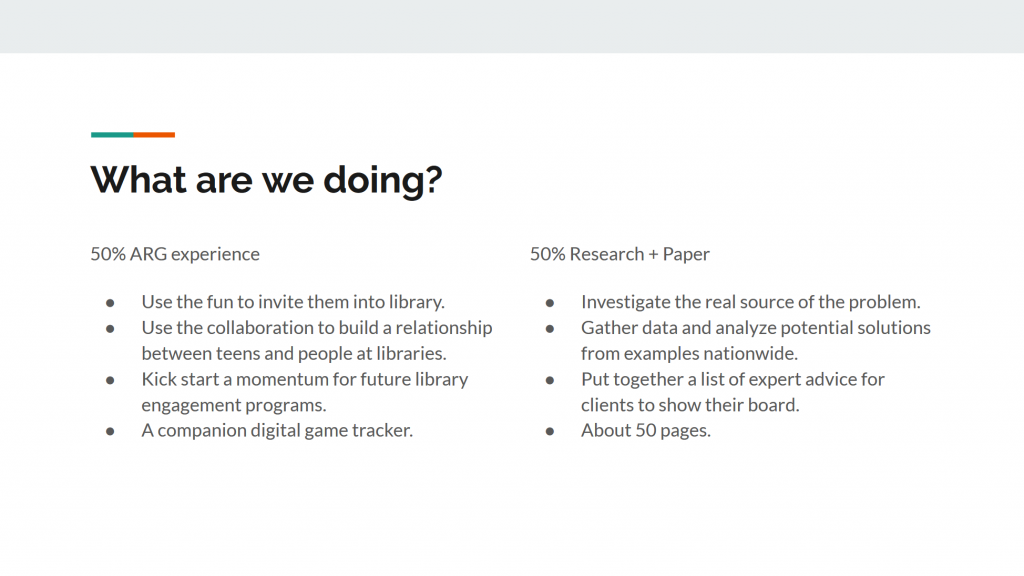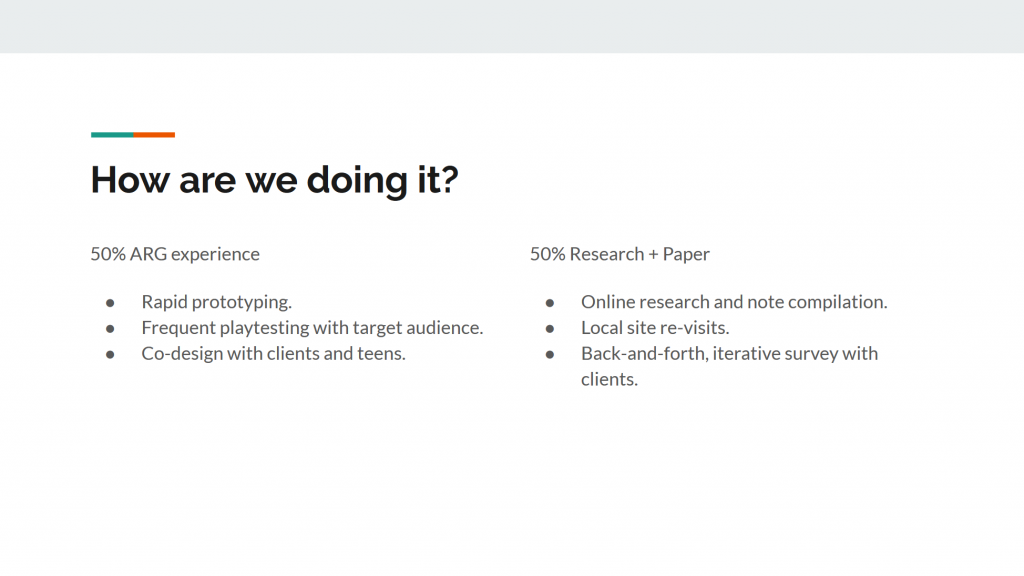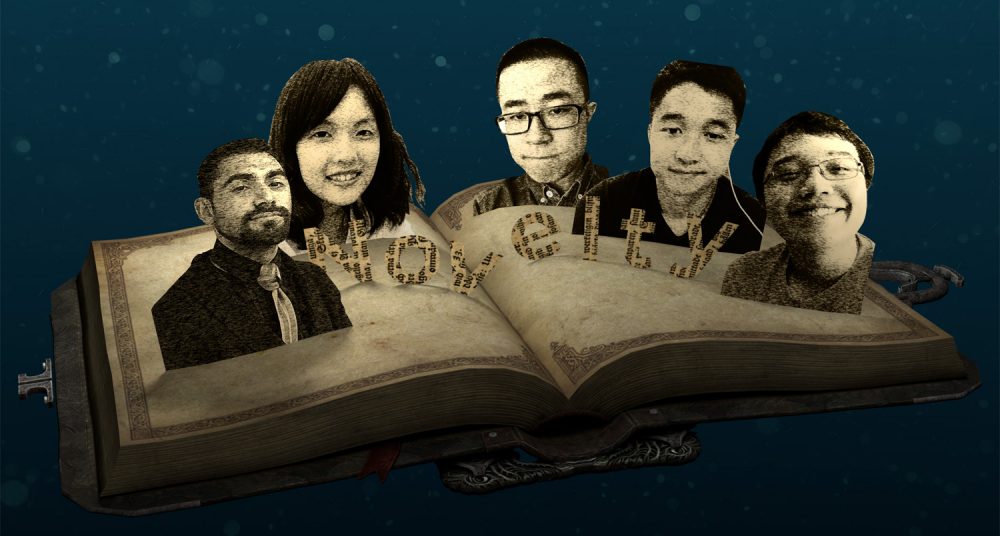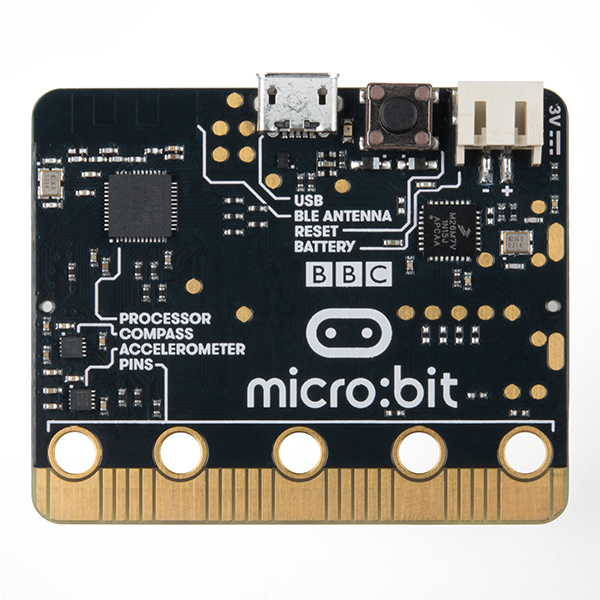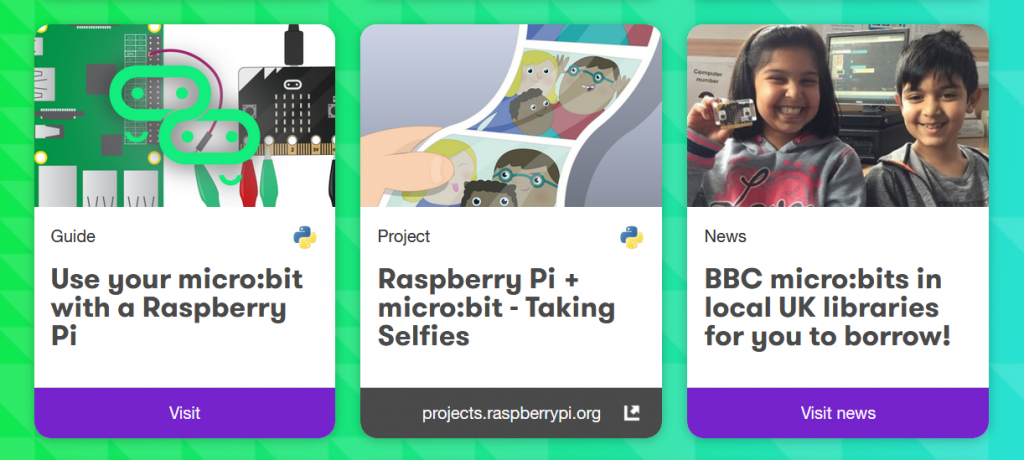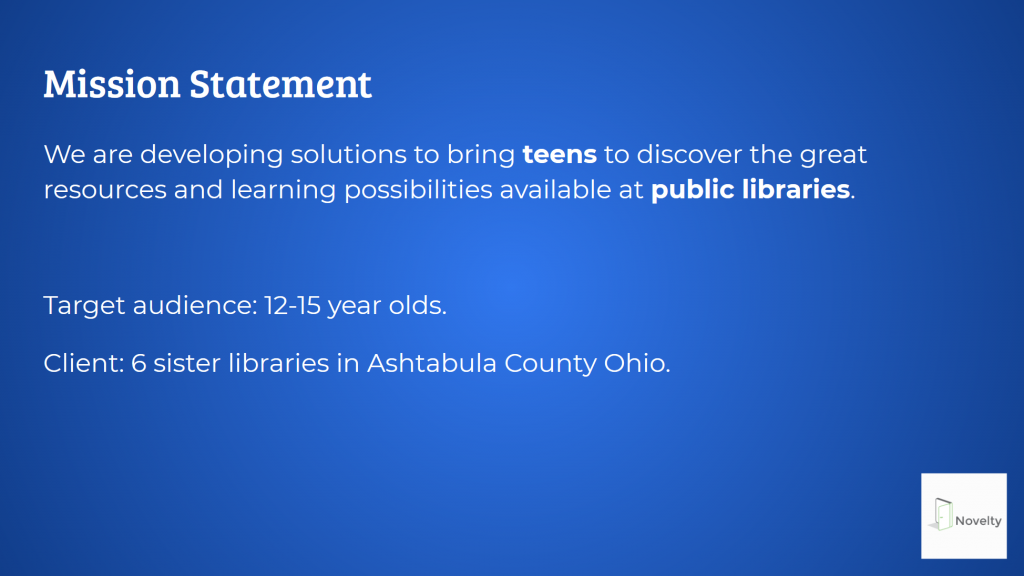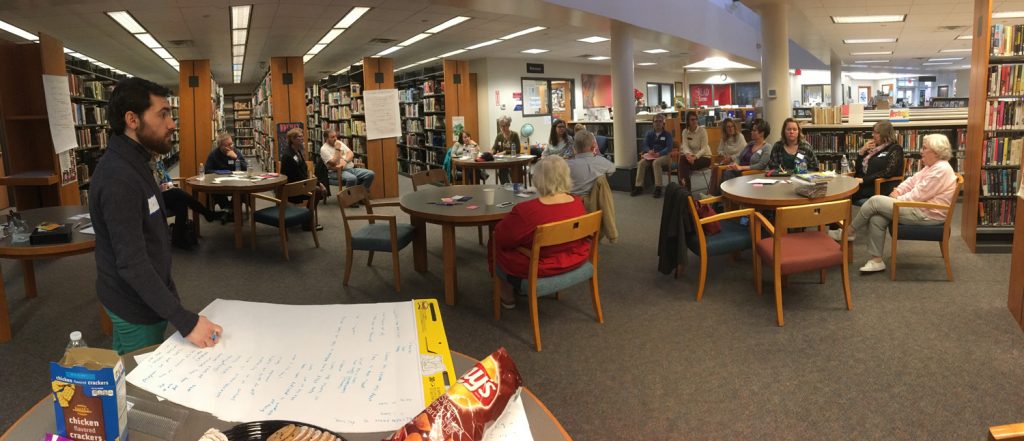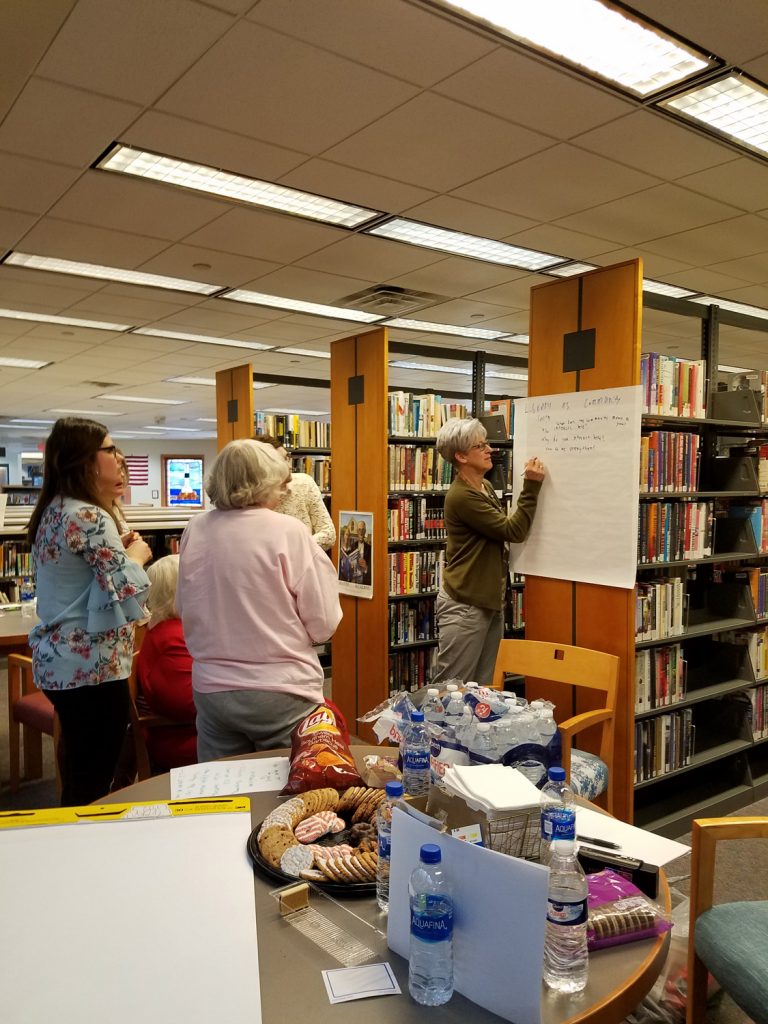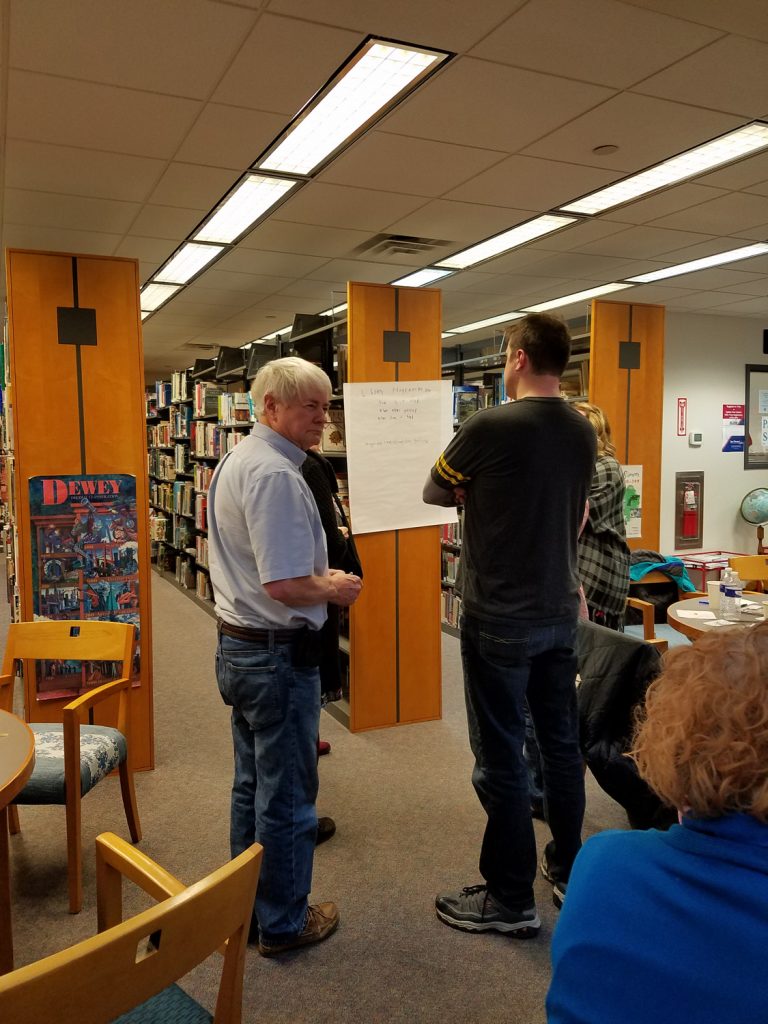This week, we made an important pivot in the direction of the project. The feedback from the faculty promoted us careful reflect upon our scope and priorities. Here is a list of the key changes:
- Redefining objective: Previously, our objective is to teach teens how to use library resources. After realizing that doing so will not guarantee sustainable motivation for teens to keep coming back to the libraries, we knew the old objective was not sufficient. The redefined object is to help libraries attract and retain teen patrons. It is broader umbrella definition, but it more accurately reflect our real purpose. This shift also means that we need to be more comprehensive in our problem-solving approach, instead of hoping the Alternate Reality Game to do the heavy lifting.
- Elevate research effort to 50% of project: We realized that we needed a lot more data than what we had to provide substantial grounds for our deliverables. There is also a considerable amount of existing works out there which, if properly compiled, can be very informative and helpful to our clients. It is our acknowledgement that the scope of our project is inherently limited in its long-term impacts. In order to truly build a meaningful, lasting relationship between the libraries and teens, a lot of the changes need to happen over time, in location, with continued efforts from the library staff. In light of this, our research’s aim is precisely to supply our clients with the information and ideas they need to implement these long-term changes.
- No long using micro:bit: The decision to let go out this technology came down to two reasons. For one, we were unfamiliar with this technology, and while we could look into how to meaningfully, effectively incorporate this technology into our experience, finding that answer was not really the goal of our project. The feeling among the team and our instructors was that we shouldn’t be “designing for the technology”. The second reason was that incorporating micro:bit would add an extra layer of design complexity that our designer deem unnecessary. Once again, we were grateful for the help and support from ETC Educational Network Coordinator John Balash. But unfortunately, sometimes we have to let a cool idea go due to the demands of the project.
So what is the structure of our project now? It will be 50% Alternate Reality Game and 50% Research + Paper.
